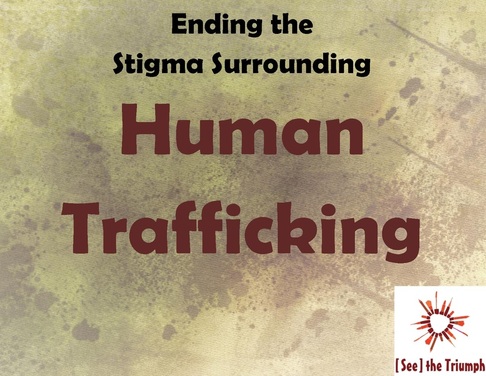|
By Christine Murray, See the Triumph Co-Founder
This June, we’re turning our attention to human trafficking, and especially sex trafficking. Increasingly, professionals and the general population are recognizing trafficking as a major category of interpersonal violence. The United Nations Office on Drugs and Crime defines human trafficking as “the recruitment, transportation, transfer, harbouring or receipt of persons, by means of the threat or use of force or other forms of coercion, of abduction, of fraud, of deception, of the abuse of power or of a position of vulnerability or of the giving or receiving of payments or benefits to achieve the consent of a person having control over another person, for the purpose of exploitation.” More specifically, human sex trafficking involves trafficking for the purposes of sexual exploitation, including forced prostitution and other commercial sex acts (See The Advocates for Human Rights and The Polaris Project for more information). Our focus at See the Triumph is typically on intimate partner violence in general, based on our research with survivors. However, this month we wanted to address trafficking for three main reasons. First, there are many links between intimate partner violence and trafficking. For example, trafficking victims may be lured into trafficking situations through the guise of an intimate relationship with their abusers. Also, as power and control dynamics underlie intimate partner violence, so too are trafficking perpetrators masters at maintaining control over their victims’ lives and decisions. Second, domestic violence agencies and other community resources are increasingly called upon to serve the needs of trafficking victims and survivors. They may be asked to provide such services as shelter and victim advocacy for survivors in their local communities. Third, there is a significant stigma that survivors of trafficking face, and we believe the lessons we’ve learned about the stigma surrounding intimate partner violence can shed light on the stigma surrounding trafficking. What does stigma look like, as it applies to trafficking? In our research, we conceptualize stigma as having the following major components:
At See the Triumph, we’re passionate about ending the stigma that only compounds the challenges associated with abuse victimization. Those who survive any form of abuse deserve our support and admiration. We hope you’ll join us this month in learning about how we can work together to end the stigma surrounding trafficking as part of our efforts to end the stigma surrounding abuse. As Ndioro Ndiaye, Deputy Director General for the International Organization for Migration, said, “By breaking down the stigma and by empowering trafficked women to step forward and speak of their experiences, global efforts to counter human trafficking, particularly of women and girls for sexual exploitation, will be much more successful. But this can only be done by tackling ignorance and prejudice among the public at large as to why women fall prey to traffickers.” Comments are closed.
|
Archives
July 2024
CategoriesAll About Intimate Partner Violence About Intimate Partner Violence Advocacy Ambassadors Children Churches College Campuses Cultural Issues Domestic Violence Awareness Month Financial Recovery How To Help A Friend Human Rights Human-rights Immigrants International Media Overcoming Past Abuse Overcoming-past-abuse Parenting Prevention Resources For Survivors Safe Relationships Following Abuse Schools Selfcare Self-care Sexual Assault Sexuality Social Justice Social-justice Stigma Supporting Survivors Survivor Quotes Survivor-quotes Survivor Stories Teen Dating Violence Trafficking Transformative-approaches |
Search by typing & pressing enter



 RSS Feed
RSS Feed